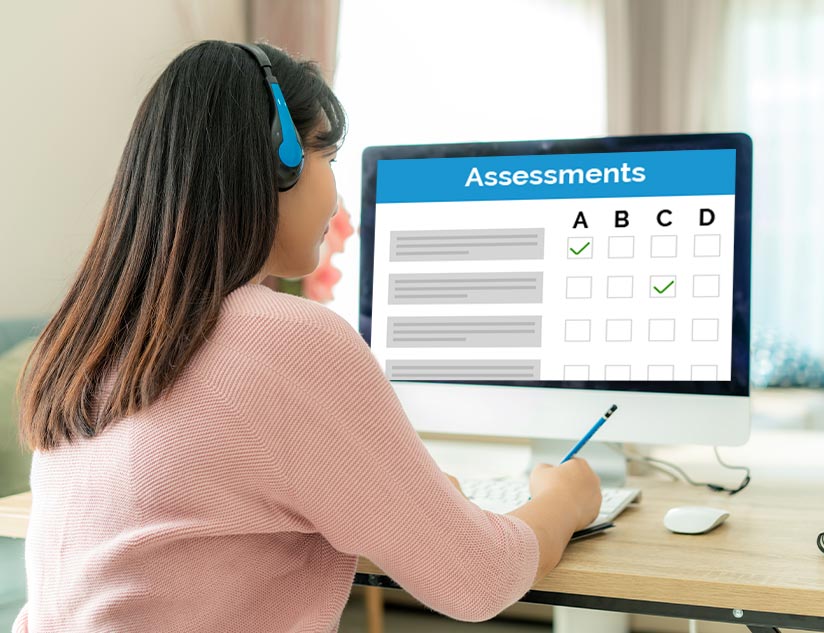Integrated Assessments to Measure Learning Outcomes
January 18th, 2022
The COVID-19 pandemic has brought in a new focus in the education industry. With educational inequity taking center stage, educators and policymakers have taken it upon themselves to reimagine assessment and accountability systems. The move can minimize the longstanding educational disparities and remove systemic barriers that have traditionally created obstacles in students’ proper measurement, achievement, ability, and schooling.
This has led to educational institutions increasingly looking at integrated assessments to effectively evaluate learning outcomes. Integrated assessment basically refers to an assessment that attempts to combine learning from multiple modules and/or lessons into a single assessment.
The US Department of Education (USED) had waived off federal assessment and accountability requirements for the 2019–2020 school year due to school closures during the pandemic. But the school closures also led to learning gaps. According to a recent study, students, on average, could be behind by up to 9 months in math. This gap could be as much as 12 months for students of color.
So, the time to re-evaluate how students are educated and assessed is now.
Growing Urgency of Integrated Assessments
During the pandemic, educators worked continuously towards improving the assessment framework for the future. As a result, they gradually shifted their focus from classroom assessments that only test knowledge of the school curriculum to next-generation assessments that help track reasoning and understanding through meta-analysis from different data sources.
This integrated approach helped learners bring together prior knowledge and experiences to support new knowledge and experiences. Such an integrated learning approach involves:
- Meaningfully blending knowledge and skills from different disciplines.
- Putting theoretical knowledge into practice.
- Analyzing multiple perspectives to foster collaborative problem-solving.
- Adapting skills learned in one situation to resolve problems in another.
- Reflecting upon connections related to academic, co-curricular, and pre-professional experiences and utilizing them.
- Integrating “across-the-curriculum” skills with learning in intradisciplinary or interdisciplinary settings.
Changing Nature of Assessments
The education sector is witnessing a swift change in the nature of assessments. For instance, educators rely more on assessment tools, such as quizzes, polls, and gamified exercises. They encourage learners to apply their minds and think beyond textbook concepts.
The digital curriculum products offered by EdTech assessment platforms are enabling this evolution in the assessment process. Here are some of the changes that can be attributed to these platforms:
1. Subjective to Objective Assessment Forms
Subjective assessments involve individual interpretation that often makes a class-wide comparison difficult. However, objective assessments can evaluate students on both memory and synthesis while being easier to administer and grade, especially with the help of eLearning tools.
2. One-Time to Ongoing Assessment
Traditional assessments focused more on end-of-program learning. But, digital assessments allow educators to measure student learning throughout the program by administering tests at regular intervals. Therefore, it is essential to assess learning progress at the right time to deploy necessary interventions.
3. Theory-Based to Project/Activity-Based Assessment
Theory-based assessments can test students for memory and theoretical knowledge. But, with project-based assessments, educators can employ holistic parameters to test understanding and real-world application.
What Does the Future Hold for Integrated Assessments?
Integrated assessments are expected to develop into a more coordinated system with the use of a variety of tools to achieve different objectives. So, assessments will further improve, specifically:
1. Interdependence
Teaching and assessment will become more interdependent. As educators will get to assess individual learning progress, they can create personalized learning paths to maximize academic outcomes. This student-centric approach will bring about more changes in classroom environments and assessments.
2. Emphasis on Method
Assessments will focus not only on what students are learning but how they are learning it. This will help educators build a strong foundation on academic concepts among students and help them develop competence in a subject. This will require educators to cover some subject matter in-depth and illustrate concepts through real-world examples so that students get a strong foundation in factual knowledge.
3. Game-Based Assessments
The increasing use of technology is encouraging educators to develop digital simulations and game-based assessments. These are extremely useful in motivating students, providing learning experiences and simultaneously assessing them. So, educators will be able to create a more engaging and interactive learning environment that will lead to more balanced and nuanced learning outcomes.
4. Focus on Metacognition
Integrated assessments will also allow testing of metacognitive skills. However, this will require educators to incorporate a meta-cognitive instructional approach in learning. This will help students to take control of their own learning by defining their goals and subsequently monitoring their own progress.
5. Standards-Based Assessments
Standards-based assessments will gain more importance as they have the ability to equip students with practical skills for successful careers with deeper knowledge, critical thinking ability, reasoning skills, and interpersonal skills. For instance, tools like Next Generation Science Standards (NGSS) will find more use due to its ability to enable critical learning outcomes.
How Integrated Assessments are Creating an Impact
There is a deep connection between assessment and learning outcomes, and it goes beyond preparing students for exams. Summative assessments are usually a one-off occurrence, taking place annually. They tend to be a stressful experience for some students. On the other hand, informal classroom-based assessments (combined with formal large-scale assessments) can better evaluate learning outcomes.
Integrated assessments are synoptic. This means they require students to make connections between knowledge and learning that span multiple modules and topics. So, they enable students to demonstrate their higher-order learning behavior that includes the application of knowledge and skills through analysis, synthesis, and critical inquiry.
The increasing use of EdTech platforms and tools in assessment has eased the entire process of evaluating skill acquisition. It has even helped in assessing how acquired knowledge can help students in real-life situations by ensuring a regular and streamlined student assessment process.
Another advantage of these assessments is that they allow educators to track student progress and provide crucial feedback both to students and their parents. So, it helps in narrowing the gap between learning and evaluation, while enabling continuous learning and progress for students.
Expected Trends in Statewide Assessment
A nationwide analysis revealed that lawmakers in 36 states had introduced legislation to reduce testing between 2014 and 2019. Several states have been working on revising their educational standards, breaking away from the Common Core. For instance, just before the start of the Fall 2021 back-to-school season, Florida adopted the Benchmarks for Excellent Student Thinking. It suggests that they are more inclined towards innovations that could make state testing systems more useful for teachers and students. So, it is expected that they will move away from single, end-of-year tests to more frequent assessments that better reflect classroom curriculum and instruction.
Integrated assessments will involve reasonable academic testing throughout the year. They will provide states, districts, schools, and educators with better reports of student learning. This kind of testing will help them avoid haphazardly resourcing and planning for teaching and learning. With access to accurate and reliable data about student learning outcomes, they can ensure high-quality education for all.
The measurement of student learning levels is an essential component of the learning process. It makes the entire process more responsive because it enables educators to make data-driven decisions and plan learning paths. And, it allows students to discover their strengths and weaknesses, and reflect on how they need to improve. To catch up with the evolving nature of integrated assessments, states and educators will need to embrace technology.
We at MagicBox, believe that assessment should be part of learning and not just grading. With a mission to transform ‘Assessment of learning’ to ‘Assessment as learning’, we partnered with customers like NTN and Folens to power their assessments that are curriculum-aligned backed by strong analytics to support immediate feedback for personalised learning, automatic grading and much more. For any questions, please talk to our experts here.














